A Vibrant, Welcoming and Diverse Future for UW Botanic Gardens: UWBG’s Co-Directors in Conversation
“The Arboretum is over 230 acres and it is absolutely a public space. And when we say public that means everyone, not just the people that live close by,” says Christina Owen, co-director of UWBG.
Read moreI’m Lichen What I’m Seeing!
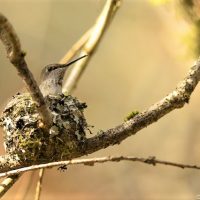
Let’s dip our toes into the bizarre world of lichens! Lichens are those interesting, colorful, strange little growths found on trees and stones that are commonly mistaken for moss. Lichens and mosses can certainly grow together and often do, but they are far from the same thing. These underappreciated epiphytes are actually not even plants at all. They are a symbiotic combination of fungi and algae which form an estimated 3,600 (and counting) different species of lichen throughout North America.
Read moreProtecting a Washington Rarity, the Endangered Desert Buckwheat
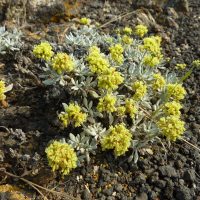
This excruciatingly rare plant has been documented in only one place: along a basalt ridgetop at the Hanford Reach National Monument.
Read moreThe Weekly Dirt 4.6.22
4.6.22
Around The Farm
by Russell Botulinski, Undergraduate Student in Restoration Ecology & Environmental Horticulture, Former Student Staff and Intern
In 2016, as part of her Masters of Environmental Horticulture capstone project, Nicolette Neumann oversaw the design and installation of the Agricultural Hedgerow at the southern edge of the UW Farm. The primary purpose was to improve native pollinator habitat and act as a riparian buffer zone.
Rare Plant Profile: Basalt Daisy

Basalt daisy (Erigeron basalticus) is a cliff dweller, found exclusively along the Yakima River Canyon and Selah Creek. There you will find it tucked into crevices and cracks of the basalt cliffs formed in the late Miocene (5 to 11 million years ago). There are six known populations in Washington State. Over the past few years Rare Care has made a concerted effort to re-monitor all known occurrences, and we only have one left to visit!
Read moreRare Care Volunteer Spotlight: Steven Clark

Each year Rare Care recognizes volunteers for their outstanding contributions.
Steven Clark has been with Rare Care since the inception of our rare plant monitoring program in 2001! Since then, Steven has contributed over 320 hours and submitted nearly 40 reports. He integrates Rare Care into the biology courses he teaches at Clark College, and helps inspire the future conservation biologists of our state.
Rare Care Research Project Updates
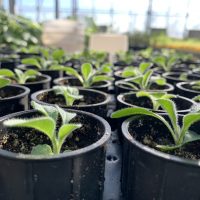
By Allie Howell
Allie Howell transitioned into Rare Care’s temporary Research Scientist position in February. Through September, she will be collecting field data, growing plants for outplantings, and helping with reporting on our many on-going research projects.
I have the exciting opportunity to delve deeply into several of this program’s ongoing projects.
So far, most of my work has been devoted to conducting vulnerability assessments on the rare alpine plants I monitored in the North Cascades, Olympic and Mt.
Sierra Cliffbrake
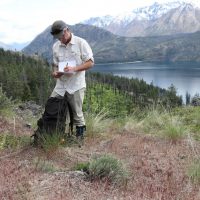
by Josh Wozniak
Lake Chelan is a narrow, glacially-carved trench: 50 miles long from North Cascades National Park to the town of Chelan. Along its shores, species typical of both the east and west flanks of the Cascades Range are well-represented. The areas surrounding the lake also contain a number of rare plant species, including some that occur nowhere else in Washington.
Rare Plant Monitoring: Tips of the Trade
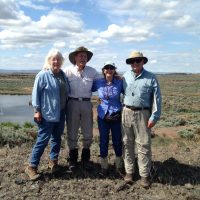
Tom Erler and Darcy Dauble are two long-time rare plant monitoring volunteers with a breadth of experience to share with our 38 recently trained monitors! During the monitoring season you will catch Tom searching for rare plants across the state, anywhere from the San Juan Islands to Douglas County. His day job is with the King County Noxious Weed program. Darcy Dauble is a retired librarian who can be found botanizing the Blue Mountains of southeastern Washington.
Read moreApril 2022 Plant Profile: Field Horsetail: Weed or Wonder?

Horsetail, a plant that Seattle area gardeners love to hate. Have it in your garden? You have likely been fighting it for years. But this plant is more than just a weed. Field horsetail, Equisetum arvense, is a tenacious perennial native to the temperate and arctic regions across the northern hemisphere, including the Pacific Northwest.
In early spring I often encounter visitors wondering about the otherworldly-looking reproductive stems of field horsetail.